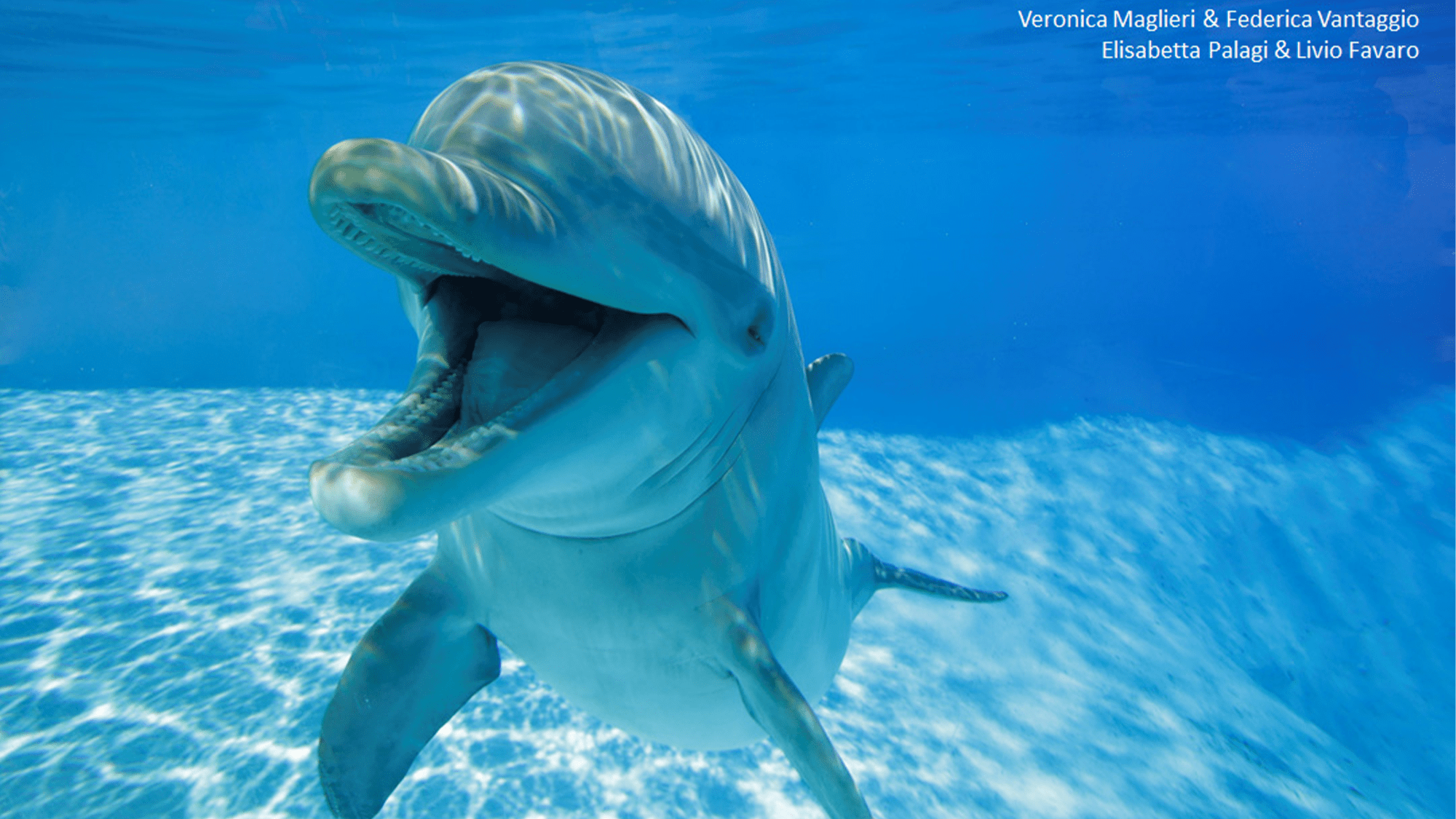Dolphins are among the most playful and social animals on Earth, yet we don’t know much about how they communicate during games and other more light interactions. New research of captive bottlenose dolphins (Tursiops truncates) indicates that they use an “open mouth” facial expression similar to a smile to communicate during social play. This expression was most consistently used when a dolphin is in their playmate’s field of view and some respond with a similar expression. The findings are detailed in a study published October 2 in the Cell Press journal iScience.
For dolphins, play can include acrobatics, surfing, playing with objects, chasing, and playfighting. These activities may appear aggressive to humans, but generally are not. Other mammals, including primates, use facial expressions to communicate playfulness, but it was not clear if marine mammals also use their facial expressions to do this.
[Related: Male dolphins form alliances to help each other pick up mates.]
“I spent a lot of years studying play across different species, and Livio [Favaro] and I wanted to start studying play in dolphins too,” Elisabetta Palagi, a study co-author and comparative ethologist at the University of Pisa, tells Popular Science.
In the study, Palagi and Favaro–a University of Turin marine biologist–recorded video of 22 captive bottlenose dolphins in four social groups. They took footage while the dolphins were playing in pairs, solo, and with their human trainers.
“After recording the first videos we realized that dolphins emitted prolonged open mouth displays while playing and we did not see a similar behavior in any other context,” says Palagi. “Open mouth is not a bite. During an open mouth expression, the subject never tries to bite the playmate.”
The team believes that this gesture likely evolved from the action of biting, breaking the action itself down to only include an intention to bite without making contact. A relaxed open mouth like this is seen in carnivores–including during human laughter–as a sign that helps signal fun.
The dolphins in the study almost always used this open mouth expression when their playmates were in their field of view. CREDIT: iScience Maglieri et al
VIDEO: The dolphins in the study almost always used this open mouth expression when their playmates were in their field of view. CREDIT: iScience Maglieri et al
The team observed that the open mouth expression was primarily used when playing with other dolphins, but not when they were playing with a human or solo. Only one open mouth event was recorded when a dolphin was playing alone, but they recorded 1,288 open mouth events during social play sessions. A total of 92 percent of these expressions happened during dolphin-dolphin play sessions. They were also more likely to use this open mouth expression when their faces were in the field of view of their playmate—89 percent of recorded open mouth expressions.
Importantly, when this “smile” was perceived, the playmate smiled back 33 percent of the time. According to Palagi, it could be argued that they are merely mimicking this expression by chance, but it does not explain why the probability of mimicking another dolphin’s open mouth within one second is about 13 times higher when the receiver physically sees the original expression.

A playmate mimicking the open mouth expression was observed 33 percent of the time over the course of the study. CREDIT: iScience Maglieri et al.
VIDEO: A playmate mimicking the open mouth expression was observed 33 percent of the time over the course of the study. CREDIT: iScience Maglieri et al.
“This rate of mimicry in dolphins is consistent with what’s been observed in certain carnivores, such as meerkats and sun bears,” Palagi said in a statement accompanying the release of the paper.
The team did not record any of the dolphins’ acoustic signals during playtime. Future studies could investigate the possibility that vocalizations and tactile signals also have a purpose during playful interactions.
[Related: Young dolphins mimic sex as part of play.]
“Future research should dive into eye-tracking to explore how dolphins see their world and utilize acoustic signals in their multimodal communication during play,” Favaro said in a statement. “Dolphins have developed one of the most intricate vocal systems in the animal world, but sound can also expose them to predators or eavesdroppers. When dolphins play together, a mix of whistling and visual cues helps them cooperate and achieve goals, a strategy particularly useful during social play when they’re less on guard for predators.”

